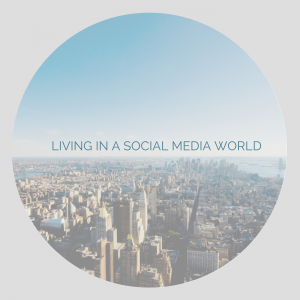Erik Qualman's Blog, page 546
May 1, 2015
23 Ivy League Networking Secrets That Actually Work Part 3.

Welcome back to the final installment of my series 23 Ivy League Networking Secrets That Actually Work.
In the previous 2 blogs we’ve gone over the first 18 secrets and you’ve learned things like what the real point of networking is, how to build rapport, create an in group and much much more.
In this blog, I’m going to share the final 5 tips and wrap everything up to help you get out there and become a master networker.
19. Use “Bribes” to Network.
I’m going to hit you with some harsh truth here.
Bribes are often the first step in friendship and business relationships.
Ernest Hemingway once wrote that “ When tipping you are not paying for nothing but in fact buying friendship. I tip the valet and he uses that money for things that make him happy, so he’s happy when he sees me and a real friendship occurs.”
Truer words have never been spoken.
Once you have someone you want to connect with, think about how you can “bribe” them to deepen the relationship.
20. Use twitter to reach out above your head
I’ve tried to refrain from telling you to “use social media” as much as possible because I think it’s super vague. Where do you start? What sites should you use? Should you spam people?
Twitter is the exception.
The cool thing about twitter is that it allows you to reach out to really high up people up to and including celebrities.
It’s well known that all of the music on the show Entourage was stuff that hit maker Scott Vener in his own words was “bubbling up on the internet.”
Twitter is where things bubble up to important people.
21. Focus on the making the other person feel good first.
When you’re networking the most important result to track is how you made the other person feel. If you made the other person feel good, you did a good job networking.
We like and want to help those that make us feel good, so focus on that first.
22. Focus on improving the 3 Bs: Beliefs, behavior or belongings
Tim Ferris famously said that to go viral you must threaten the 3 Bs: behavior, beliefs or belongings.
Well to network we want to go the other way and think about what you can do to agree with the other person’s beliefs, reinforce the correctness of their behavior, and help them improve or acquire their belongings, if you do that you will have networking success.
23. Don’t take yourself or the event so seriously you don’t enjoy it.
It’s important to have fun, don’t be afraid to be silly, joke around, and make everything a little less serious.
Don’t take networking so seriously that you forget to have fun and enjoy yourself!
So to sum this all up, you know you should go to more networking events, and network more in general, no matter what situation you’re in whether you’re looking for a job or have just started your dream business.
You’ve heard “it’s not what you know, but who you know” and other clichés about meeting the right people, but you just don’t have the right contacts to move your career to the next level.
Before you read this series of posts you might have had questions like:
“Who should I be networking with?”
“How do I get work from a networking event without seeming cheesy or desperate?”
“How do I express my true value to a stranger at a networking event?”
Ryan has provided the answers to these questions for you in this post, I’ve just been lucky enough to jot it all down and bring it to you. I used these very secrets to go from being unemployed with no college degree to making over $300,000 doing corporate presentations using these exact same principles. If you can follow the simple (but not easy) advice in this post, you will make more meaningful business connections then you know what to do with, and you’ll have your choice of jobs, investors, partners, and friends.
The last thing I want to leave you with is a little piece of wisdom Ryan imparted on me when I was really down in the dumps. My fiancée had left me, I was getting nowhere fast with the job search and I was starting to empty my savings and retirement accounts. He told me that the real key to networking is making it easy on the other person.
Make it easy for them to understand who you are, what you do and how you can add value and benefits to them.
If you can do that you too can use the secrets of the IVY League to make sure every networking event you go to will be a success!
Now go out there and start networking!
[image error]
Tesla’s new product is a battery for your home

CNN – Tesla has unveiled a suite of new energy products, including a wall-mounted battery that will be sold for use in consumers’ homes.
Tesla is calling the rechargeable lithium-ion battery the “Powerwall.” As the name suggests, the unit is designed to be mounted on a wall, and connected to the local power grid.

Image from CNN
It will be sold to installers for $3,500 for 10kWh, and $3,000 for 7kWh. Deliveries will begin in late Summer.
Home batteries power up overnight, when energy companies typically charge less for electricity. Then, they can be turned on during the day to power a home. The batteries typically cost thousands of dollars, though many utility companies offer rebates.
Kimbal Musk, a Tesla board member, told CNNMoney earlier this week that the new battery would slash consumers’ electric bills by 25%.
The announcement was made during an event in California. In promotional materials, Tesla referred to the battery as “the missing piece.” In addition to the Powerwall, Tesla also announced an energy storage system for businesses, and a large scale system for use by utilities.
“The issue with existing batteries is that they suck,” said Tesla CEO Elon Musk. “They’re really horrible.”
When coupled with solar energy, the batteries will help accelerate the move away from fossil fuels, he said.
“That’s the future we need to have,” Musk said. “It’s something we must do, and we can do, and we will do.”
Speculation over the new product line has been building since Jeff Evanson, Tesla’s investor relations director, sent a letter to investors and analysts saying the electric car company would soon announce a “home battery” and a “very large utility scale battery.”
Tesla (TSLA) has talked about releasing a home battery for about a year.
Tesla shares have jumped 20% over the past month as investors speculated about the battery’s technical specifications and market potential. The company is scheduled to announce its first quarter earnings next week.
Article by Charles Riley for CNN
Thumbnail from Shutterstock
[image error]
5 Things Internet Marketers Should Do Each Day

As an internet marketer, you’ve got a lot on your plate. There’s content to be written, social media accounts to be managed, analytics to be reviewed, target markets to be analyzed, leads to be nurtured, landing pages to be developed, and plenty more. How then can you possibly remain sane and instill order in your days? The answer lies in planning and consistency.
The Value of Time Blocks
Before looking at some of the specific tasks successful internet marketers complete on a daily basis, it’s important to gain a firm understanding of how you make time for these tasks. There are a number of strategies, but many industries and professionals believe in brief 10-minute allotments.
By breaking your daily routines into 10-minute segments, you can get more done and continually improve your skillset and overall productivity. With the idea of time blocks in mind – yours could be 10, 20, or even 30-minutes – here are a few tasks you should be doing on a daily basis:
Goal setting and planning. While much of the focus is on long-term business goals in the corporate setting, you also need to pay attention to short-term goals. In other words, you should set daily and hourly goals. By doing this every morning and simultaneously planning for how you’ll meet those goals, you can increase productivity throughout the remainder of the day.
Organizing email inbox. Oh, the dreaded email inbox. How do successful internet marketers manage their inbox without getting overwhelmed? They take a few minutes each morning to organize. Most have some sort of folder system where they can easily file away emails for future reference. With your own folder system, you can stay organized without feeling like you have to immediately respond or delete every message in your inbox.
Brainstorming ideas. You have to set some time aside for brainstorming and innovating. Even if it’s only for 10 minutes, you need a designated period of time where you shut off all electronics, close the door, and think. Jot down anything and everything that comes to mind. You’ll be amazed at how many innovative marketing ideas spawn from this quiet time.
Monitoring social listening tools. You probably pay an arm and a leg for social listening tools, so put them to use! Take a minimum of 10 minutes in the morning and late afternoon to review social listening tools and record what’s being said about specific campaigns, content, and posts.
Taking regular breaks. Finally, you need breaks! Successful internet marketers understand that they’re useless without a fresh mind. Taking small breaks throughout the day may seem like a waste of time, but they’ll increase your productivity and longevity through the day.
Making Time for Success
Unfortunately, there’s no secret recipe for internet marketing success. Everyone functions differently and what works for one person may not for another. The key is to discover ways to better use your time and become more productive. In many cases, this involves some of the tasks and tips mentioned here. Give these six tips a chance, because you’ll never know unless you try!
[image error]
Mobile Gaming Apps: Leading the Way in a Content Rich World


We live in a media-rich world, where diverse content drives everything from brand awareness to sales conversions. This has been seized upon by the mobile app industry, which now offers multiple avenues for consumers to download and share content such as music, videos and literature. While there the markets for audio, visual and literature apps are commonplace and lucrative, however, there is one sector that continues to outstrip them all in 2015. This is the market for mobile game apps, which is projected to grow at 16.5% this year and reach a cumulative value of $3.04 billion.

While this is impressive by itself, it also stands up to competition from similar sectors. 2015 will see the rate of e-book downloads rise by just 4.4%, for example, while the music app market will also grow at a relatively modest 5.4%. Although video app downloads are predicted to increase by an impressive 13.8% this year, this still falls short of the growth in the mobile gaming market. This is according to data released by the eMarketing group, and it suggests a genuinely bright future for mobile game developers, virtual gaming sites such as free casino games and individual platforms such as Android and iOS.

In addition to sharing these insightful figures, the report also offers suggestions as to why mobile games continue to outstrip alternative types of app. The most prominent is the innovative and purposeful freemium business that drives mobile gaming, as this makes titles freely accessible to players while also encouraging them to make in-game purchases that enhance their experience. As well as affording customers the freedom of choice as to how and when they spend, this is also expected to account for up to 60% of growth in the sector and equates to an estimated £1.82 billion.

This years’ growth in the mobile sector is not only pronounced, but it also continues a trend that has continued for more than three years. More specifically, mobile games are continuing to account for a larger share of the overall market, rising to 30.9% for 2015. This contrasts sharply with just 26.4% in 2013, and highlights the rising influence of this specific sector.
Thumbnail courtesy of Shutterstock
[image error]
April 30, 2015
Why Every Marketer Needs to Have a Full Understanding of Web Hosting

Once you have registered a domain name, your next logical step is to find a reliable hosting provider. However, just a quick Google search will bring up around 100 million results, so it can be hard to know which host is right for you. If you want to have a successful presence online, though, you have to put some thought into the web hosting provider that you choose. Keep reading for a list of the things you need to consider.
Web Space
The amount of web space you need, will be determined by the type of site you are going to run. If you are just going to have a five page website which outlines what you can do, you won’t need a lot of room. However, if you are also going to have a blog that is heavily marketed, you may need to upgrade to a plan with more room.
Bandwidth
The amount of bandwidth that you need will again be determined by your website. Most small sites find 10GB of bandwidth to be more than enough, however if you are planning on uploading ebooks for people to download, or lots of graphic images, you will likely need more than this.
Email Accounts
As a marketer, you will know that it is best to have an email address from your domain, as it looks more professional. So, check to see whether your web hosting provider will let you have an email address with your account. Some web hosts, will give you unlimited email accounts for no extra charge, whilst others may charge you for each one you need. You should also check whether your account is catch-all forwarding, or if you have access to a webmail client like Squirrel Mail.
Up Time
One of the most important things that a marketer needs from their website is reliability. If your site is down, it not only looks unprofessional, but it could also cost you custom. Lots of sites guarantee a 98% uptime, but if you put this into perspective, that’s still around six days a year when your website will be down. Instead, try and find a provider that offers at least 99.7% uptime – the more reliable your site is, the better the experience your customers will have.
Technical Support
If you are a marketer without technical knowledge, you’ll need to consider finding a web hosting provider that offers good technical support. Ideally, you need to contact them and find out how long it will take to get a reply to a query, and also ask what types of support they have available (email, phone, live chat, etc.). You also need to find out whether they work a normal 9-5, or whether 24 hour support is available. Try to choose a company that makes you feel at ease with any problem you may have. Keep in mind that technical support is not connected with what you use for your site in terms of actual files. You will want to use really good responsive themes even for WordPress.
These are just a few of the factors that should influence your decision when choosing a web hosting provider. Keep them in mind, and don’t just opt for the first company you find.
[image error]
IBM, Apple, Japan Post tackle aging

USA TODAY – NEW YORK—IBM, Apple and Japan’s largest employer Japan Post are joining forces to deliver iPads and software on those tablets to help improve senior’s lives in Japan. Under a pilot program kicking off in the second half of this year, the companies plan to deliver up to 5 million iPads to seniors there by 2020.
The global elderly population will increase from 11.7% in 2013 to more than 21% by 2050. In the U.S., 10,000 people turn 65 every day.
The custom built apps targeted at the older population under the partnership will help folks remember to take medication, manage doctor’s visits, handle household maintenance chores, monitor diet and exercise and stay in touch with loved ones who live miles away, often via Apple’s FaceTime video calls.
“Today is about reimagining life for what is the largest generation that has been in history and that is the seniors,” says IBM CEO Ginni Rometty. Apple CEO Tim Cookcalls this a “groundbreaking initiative,” one with “global implications” that goes beyond Japan.
In Japan, there are 33 million seniors, representing about 25% of the country’s population.
Under Cook, Apple has been addressing health care issues through such recent initiatives as HealthKit and ResearchKit. And Cook pointed out that iPads include built-in accessibility tools, such things as closed captioning, voiceovers and dictation.
Today’s announcement advances a business partnership that Apple forged with IBM last July. To date, the partnership has produced 22 apps in 11 industries.
“The most important thing that you’re working on is what is about to come out,” Cook said when asked which of those apps has been the most significant to date.
Envisioning Group analyst Richard Doherty says “this is probably the first of many initiatives between Apple and IBM to link trusted communities.”
Cook and Rometty were joined on stage at IBM Watson headquarters in New York City by Japan Post’s soon to be 80 year old CEO Taizo Nishimuro. Japan Post handles banking, insurance and Japan’s postal service. Under Japan Post’s fee-based Watch Over service, employees check in on elderly customers on behalf of their families to help ensure the elder’s well-being.
Cook says that Japan Post brings a unique footprint in Japan. Duplicating the service in the U.S. might take regional efforts, he said.
Article by Edward Baig for USA TODAY
Thumbnail courtesy of Shutterstock
[image error]
Elderly Finding Using Social Media is Healthy

Often we think about social media in a context where middle schoolers are posting their latest Starbucks drink or 20 somethings are tweeting about where they’re going that night.
But social media has a vast array of uses, and one that is quite beneficial is for seniors in the realm of healthcare.
More and more people in the older generation are becoming familiar with social media and for a variety of reasons.
It’s a great way to stay connected to family (especially grandchildren) and a nice way to reconnect with old friends. And the more they learn about social media, the more they can use it.
Living a Long and Beneficial Life
Getting the latest on healthcare is a smart use of social media.
Among the ways to do that via social networking:
• Facebook – Facebook is great for checking out reviews of hospitals, physicians and new technology. It’s also a nice venue to get personal insight and information on others’ experience with health issues.
• Podcasts – Finding the latest information can be daunting, but tuning into the right podcasts can be a great way to stay abreast of the latest information. Whether it’s about treatment options, new advancements and technology, side effects or procedures, podcasts offer loads of good information.
• Text messages – Many doctor’s offices, hospitals and pharmacies are using text messaging to send reminders on appointments, refills and care. It’s so much easier and convenient than trying to return phone calls.
• Twitter – Twitter may seem for the younger crowd, but it’s an excellent place to find great information. Whether it’s for different views on a particular subject or the latest breakthroughs, twitter offers expert advice on anything you want to know about. You can search anything by a hashtag, like #kneereplacementrecovery or #medicineforjointpain
• Blogs – Blogs on any topic are a good way to search for information. Whether you are looking at expert blogs or product blogs, you can find any information on what you’re looking for. As the following article looks at, just enter a topic in your favorite search engine, like “How pets help senior citizens” or “The Elderly and Noni Products” and you’ll have tons of information at your fingertips.
The key to using social media for any information, regardless of age, is to take it all with a grain of salt.
Remember, anybody can write and publish to the Internet, so don’t believe everything! Sometimes you have to sort a little to find what you want and what you trust. You will learn reliable sources and where the best information comes from.
That’s another reason social media is great, because you can follow your trusted sites to garner the best and most reliable information for you.
Photo credit: Image courtesy of Shutterstock
[image error]
Microsoft aims for 1 billion devices running Windows 10

CNET – Microsoft has a plan for Windows 10 to get onto all sorts of devices — a billion of them, before too long.
“Within two to three years of Windows 10‘s release, there will be 1 billion devices running Windows 10,” Terry Myerson, Microsoft’s vice president of operating systems, said Wednesday during the keynote presentation at the company’s annual Build developer conference in San Francisco.
For now, the starting point for that timetable remains “this summer,” a broad target that Microsoft revealed in March, though the chief executive of chipmaker AMD, a longtime Microsoft partner, earlier this month spoke of a release date in late July. At Build on Wednesday, Microsoft’s parade of executives failed to address the matter.
Windows 10 has the potential to solve some of Microsoft’s most pressing problems. The operating system “will be a service across an array of devices and will usher in a new era…where the mobility of the experience, not the device, is paramount,” CEO Satya Nadella told investors last week after Microsoft announced earnings and said the company’s profit topped Wall Street’s expectations.
That is, Microsoft is making a promise to developers and consumers that Windows 10 will be a single platform on which to run all their apps across all their devices. Developers will write to a single code base, allowing them to create so-called universal apps that work on any device so long as that device runs Windows 10, including phones, tablets, PCs, the Xbox One game console, TVs, ATMs and even the new HoloLens virtual-reality headset.
Windows 10 is also an attempt to atone for the missteps of the little-loved Windows 8.
One tool for getting to the goal of universal apps is software known as Continuum, which will help Windows 10 to detect and adapt to the type of device you’re using. “With Continuum for phones, we believe any phone can be your PC,” said Joe Belfiore, Microsoft’s corporate vice president of the operating systems group, said during the Build event Wednesday.
Also at Build, Microsoft showed off HoloLens running apps from Windows 10, pointing the way toward things like a holographic version of Skype that could go with you from room to room in your house.
Myerson, meanwhile, spoke of how Microsoft is trying to make it easier for developers to bring Android and iOS apps over to devices running Windows. Google’s Android and Apple’s iOS operating systems run on some of the most popular smartphones, including the iPhone and Samsung’s Galaxy S lines, and have a vast ecosystem of widely used apps. Microsoft’s own phone platform has proven far less attractive to developers.
Another key feature of Windows 10 will be a brand-new Web browser. Previously known by the code name Project Spartan, the browser will now officially be known as Microsoft Edge, the company revealed during the Wednesday keynote. It’s not a complete replacement for Microsoft’s venerable Internet Explorer, but rather an alternative and more flexible browser in the mold of Google’s Chrome and Mozilla’s Firefox.
At the moment, Windows 7 is the most popular version of Microsoft’s operating system, a mainstay of desktop and laptop PCs for decades. At the start of April, it was running on 58 percent of PCs as measured by Net Applications, which tracks Web traffic to devices. The newer Windows 8 and 8.1 combined have garnered a far smaller share — less, even than the much older Windows XP, which Microsoft no longer supports.
Article by Carrie Mihalcik and Nick Statt for CNET
[image error]
The Green Impact of Social Media

Due to the substantial benefits to the environment of going green, more and more individuals and businesses are jumping on the green bandwagon.
Perks of going green include conserving natural resources, reducing pollution in the air; reducing waste and giving people an overall better quality of life.
Supporters of the green movement have turned to social media to help spread the word. Social media allows people to communicate in ways unlike ever before. Because social media is worldwide, people can now influence others all across the world instead of just locally.
Social Networking Making a Difference
The article “How can you live greener? Ask ‘The Crowd’” discusses how working as a team via social media or crowdsourcing can help get people involved in improving the environment together.
The app Tzoa hooks up to smartphones and lets users know about the conditions of the environment exactly where they are. If pollution is high, for example, the app will let you know and you can move indoors.
Another example is InnoCentive Challenges, an internet platform that allows environmentalists and scientists to come together to work at solving problems.
People around the world can submit ideas and win prizes if their idea is selected. The best way to spread word on this program is, of course, through social media.
Social Media and Going Green
If you’ve been living a green lifestyle for a while and are hoping to spread the word on the green movement, there’s no better way to do so than by using multiple social media platforms.
Tips for helping others lead a greener life through social media include:
Sharing timely, relevant information – If you come across an article online about the benefits of going green or the latest innovations on the green movement, share it with your followers on social media. The largest platforms include Facebook, Twitter, Pinterest, LinkedIn, Instagram and Google Plus. You don’t have to share the story on all platforms, but by sharing on at least two or three you will reach a wider audience;
Posting often – Your followers on social media are following you for a reason – because they like the information that you share. Don’t be afraid to share articles and post often. You can post random stats about going green, provide a few quick benefits of going green, list ways individuals and businesses can live a green lifestyle and more. Your posts can be long or short, full articles or just small snippets. The key is posting often;
Responding to followers – The reason people use social media is to interact with other people. If someone asks you a question or responds to an article or stat that you shared, make sure to respond back. Keep the conversations going by engaging your followers, asking them questions, taking surveys and responding to their questions.
Social media is one of the best ways to get a job, connect to other like-minded individuals and keep in touch with family and friends.
You can use the platforms to share your interests, especially if that involves changing the environment for the better by adapting a greener lifestyle.
Photo credit: Image courtesy of dan at FreeDigitalPhotos.net
[image error]
April 29, 2015
Learn What is Plagiarism and How It Corrupts Social Media

You probably got used to the idea that plagiarism haunts you everywhere. And you know for sure that the Internet is a kind of “plagiarism residence” – when something gets here, it often becomes “common knowledge” which means that defining authorship might be simply impossible because everybody can access and copy-paste what is published.
You know that in web space the boundary between “my” and “yours” erases naturally, and the Internet becomes a stock of ideas and solutions. You are free to use them, but the thing you should keep in mind is to be cautious. When people are given unlimited freedom, violations occur more frequently, and content checker tool can prove it.
You are lucky to have access to global information resources for no fee and anywhere the Internet connection is. Thus, according to the research conducted by Pew Research Center, 55% of college presidents admit that the number of plagiarized papers has increased over the recent ten years. 89% of them agree the Internet influenced students.
Advantages that social media suggest you
Thanks to the Internet social media have become enormously popular as well. Apart from having fun and communicating actively, social media can help us in studying and work.
Writers or publishers can join groups in social networks according to their professional interests, where they discuss anything that matters much to them and share experience. If they are freelancers or search for a new job, it’s easy to find a vacancy online.
All these things are quite okay, but there is a “P-word”, which spoils lives of students, teachers, writers, publishers and other people working with content. It’s plagiarism.
Trustability of social media posts
Do you remember times, when only experts (journalists, scholars, other public figures) had a chance to bring their message to the world with the power of media? People used to write to newspapers and magazines to make their opinions published. It’s all gone, and now we all can share our views online.
Do you know why public figures were allowed to speak out in media? It’s all about trustability. They have a good reputation and obviously care about their image. So, they take responsibility for what they say. And as a rule, the audience was likely to rely on their opinion.
Nowadays you don’t have to be in public figures’ shoes, the only thing required is Internet access. However, the credibility of information presented by non-experts is questionable. The thing you can do: not to count much on what you see in social media and double check information you use.
Reposts save users from copyright violation
The problem is that authorship in social media can easily get lost. Somebody forgot to give credits to a person, who created a post, and it turned into so called “common knowledge”. This is how it usually happens. And one day you can also become that person, whose content will be deprived of authorship.
Luckily, repost buttons save the day! It’s a kind of bonus for those who don’t ignore references. No extra efforts – hit the button and enjoy a blog post, tweet, pic and video. This way you give credits to authors and use materials correctly. Use repost buttons, favor authorship!
Of course, it might seem that to take information available on the web without giving credits is fine. But it isn’t. Internet users got accustomed to the idea that citing is a kind of formality suitable for academic sphere only, so there is no reason to do it. So, if they use words of nameless authors without attribution, it’s okay, and no one can accuse them of plagiarism. Though citing is a must for social media fans too.
Risks of plagiarized text usage
It’s a Sisyphean task to trace all plagiarism and incorrect citing across the Internet. And it’s practically impossible to catch violators. Sure, plagiarists can be banned, but again and again breakers go on stealing somebody’s materials claimed as their own. Please, don’t become one of the naughty copycats who try to put hands on others’ intellectual property.
In order to be a decent Internet user and know how not to plagiarize, check these tips:
Use references: indicate who created material, no matter what it is – text, photograph, video or anything else.
Use checkers: sites to check for plagiarism are always helpful – you scan your document online and get result immediately, for example via Unplag Plagiarism Checker or ContentRescue.org.
Use your own ideas: get inspired by ideas of other people, but try to develop and express your own – they deserve to be heard of!
[image error]






